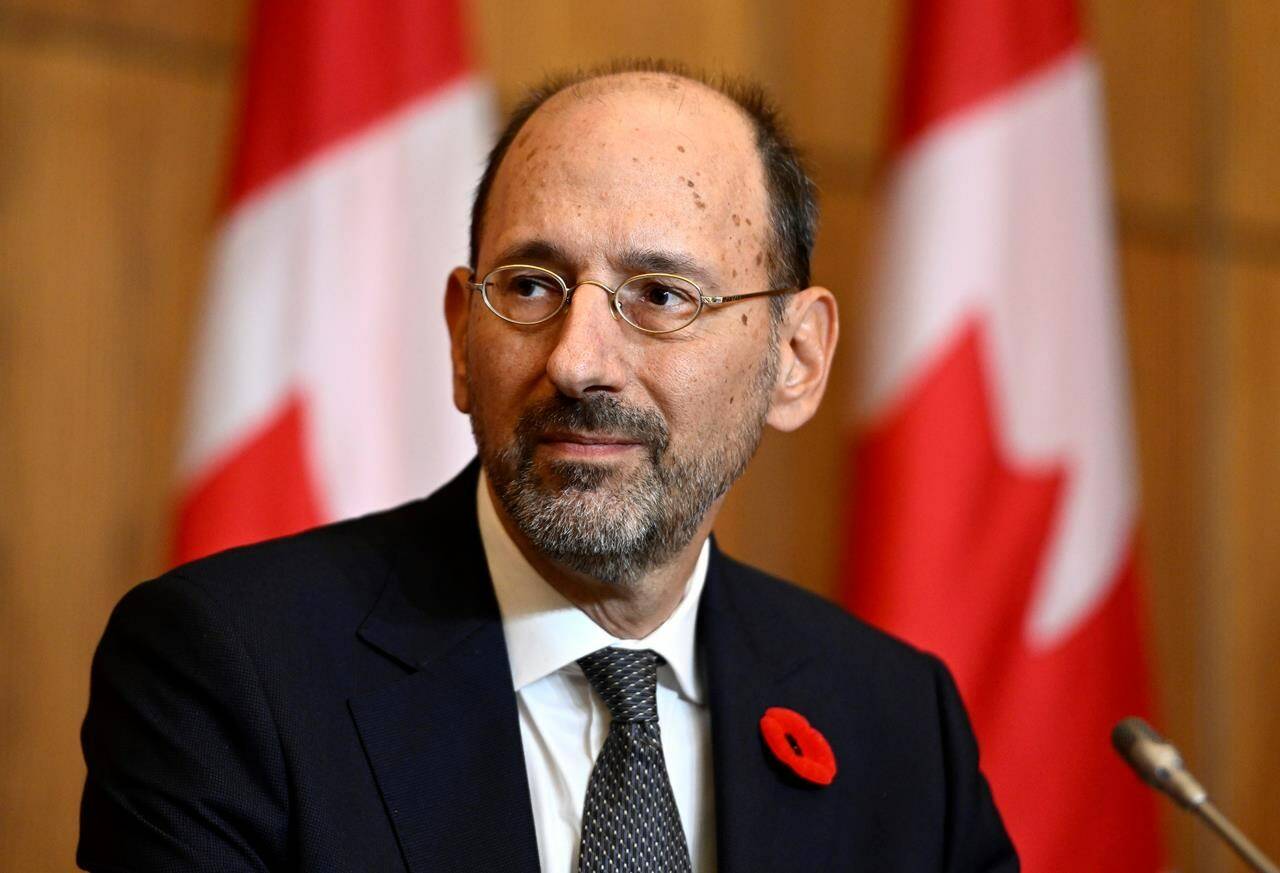Canada has made scant progress in addressing the overrepresentation of Black and Indigenous people in prisons, with some facing even worse conditions than a decade ago, a new report says.
The country’s top prison watchdog says systemic concerns and barriers, including rampant racial discrimination, stereotyping and bias, are “as pervasive and persistent as before.”
Correctional Investigator Ivan Zinger said in a press conference Tuesday that he is disappointed the “extraordinarily well-financed” agency in charge of Canadian prisons has failed to recognize its role in reversing the crisis of overrepresentation.
“For an organization that spends so much money to have poor correctional outcomes, especially for Indigenous prisoners as well as for Black prisoners, is a real shame and something that Canadians should be concerned with,” he said.
The Correctional Service of Canada employs about 1.2 staff members for each incarcerated person and spends almost $109,000 a year per prisoner, Zinger said, putting it among the best-financed agencies in the world. “These are phenomenal numbers.”
Public Safety Minister Marco Mendicino, who oversees the service, said that he welcomed the “meticulous” report and that “extensive work” is underway to address issues.
“I look forward to working closely with CSC to ensure progress is made on the issues identified in this report to improve our federal correctional system,” he said in a written statement.
“All offenders must be able to serve their sentences with dignity and without fear, in an environment that supports rehabilitation and prepares them to reintegrate into Canadian society.”
Zinger’s latest annual report includes an investigation of the experience of Black prisoners and the first part of an investigation focused on Indigenous people in the system. Both are updates to landmark reports in 2013, and neither found much improvement since then.
Black prisoners represent 9.2 per cent of the total incarcerated population despite representing only about 3.5 per cent of the overall Canadian population, the report says. More than a third of them are young Black men aged 18 to 30.
The investigation found that Black prisoners were more likely to be overrepresented at maximum-security institutions, involved in “use of force incidents,” involuntarily transferred, placed in solitary confinement, institutionally charged and assessed as “higher-risk” and “lower motivation.”
Black prisoners relayed their experiences of “discrimination, differential treatment, stereotyping, racial bias and labelling,” the report reads, and “consistently reported use of derogatory or racist language by CSC staff, as well as being ignored or disregarded in ways that increase feelings of marginalization, exclusion and isolation.”
They also told investigators that they were more likely to be labelled as “gang members,” or treated as such.
Zinger decried the correctional service for an “underwhelming and disappointing” response to his recommendations, and for consistently failing to include input and support from Black community groups. He said the agency promised more sensitivity training, more research projects and more policy reviews in response.
“The service’s stated commitment of creating ‘an anti-racist organization that is more inclusive, diverse and equitable’ looks good on paper,” he told reporters.
“But top-down, corporate-driven diversity, inclusion and anti-racism frameworks are not likely to reach down to root out the discriminatory and unfair treatment that Black people consistently related to us in the course of this investigation.”
The overrepresentation of Indigenous people in prison continues to worsen, with Indigenous people now making up 32 per cent of the prison population, and more than 50 per cent of incarcerated women.
Indigenous people are also more likely to be subject to the use of force by correctional officers, put into structured intervention, placed in maximum security and labelled as gang members.
Indigenous prisoners are more likely to self-injure and attempt suicide. Five out of six people who died by suicide last year were Indigenous, Zinger said.
“We found, again, terrible outcomes,” he said.
Though more than 30 recommendations have been made to the correctional service over the years on how to fix the problem, including funding healing lodges and allowing the supervision of Indigenous offenders in their own communities, it “hasn’t followed up very much on many of them,” said Zinger.
Zinger’s report includes a third investigation, this one addressing restrictive confinement in maximum security institutions for men.
It found that federal legislation intended to replace the former “administrative segregation” regime with “structured intervention units,” has failed to prevent the creation and extension of segregation-like conditions.
A wide range of practices similar to solitary confinement are still used, including “voluntary limited association ranges,” which are purportedly designed for “inmates who do not want to integrate in mainstream inmate populations” but who do not meet the criteria for placement in structured intervention units, the report says.
These “exist outside the law,” says the report, and Zinger is calling on the correctional service to develop a national policy addressing such systems that takes into account prisoners’ rights, freedoms and privileges.
Zinger’s office has made 18 recommendations to the federal government overall, including eight focused on improving the lives of Black prisoners.
The recommendations include the development of a national strategy that specifically addresses “the unique lived experiences and barriers faced by federally sentenced Black individuals” and a renewed call to appoint a new deputy commissioner focused exclusively on Indigenous corrections.
Among other things, Zinger is also urging the government to prohibit the use of dry cells beyond 72 hours, update the CSC’s national drug strategy, change a “discriminatory” system of organizing maximum-security women and add basic safety equipment such as seatbelts to prisoner escort vehicles.
RELATED: B.C. prosecutors get new guidelines for dealing with Indigenous accused

